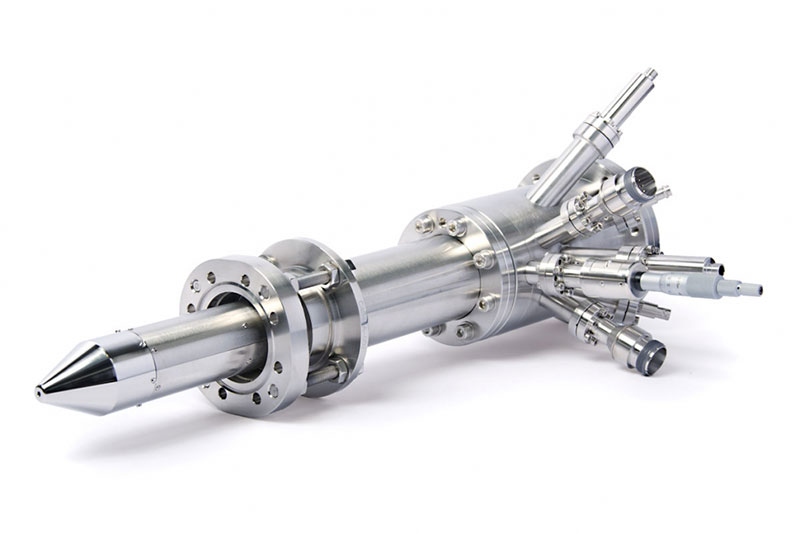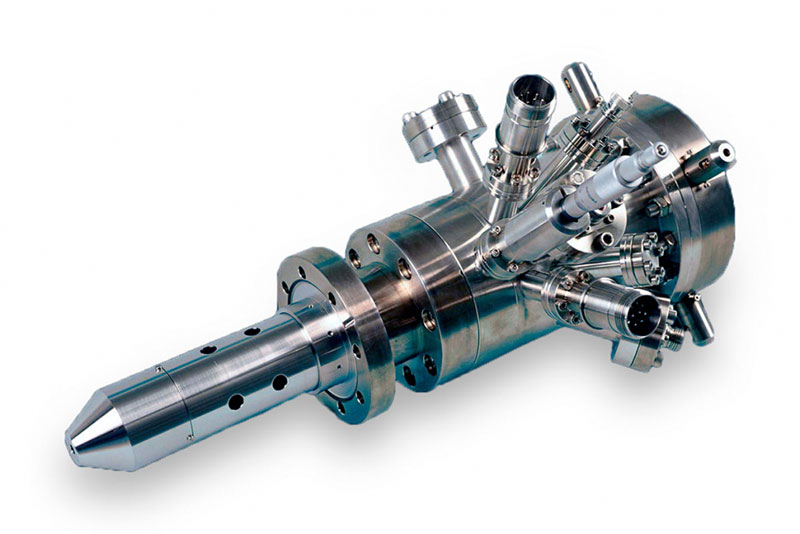Liquid Metal Ion Beams
ULTIMATE RESOLUTION AND PRECISION
Liquid Metal Ion Beams

Liquid metal ion sources have high-brightness and small spot sizes. Applications range from secondary ion mass spectrometry (SIMS) to focused Ion Beam (FIB) milling.
IOG 25 Liquid Metal Ion Beams
For the ultimate high-resolution SIMS analysis of hard materials, the 25kV IOG 25 liquid metal Ion Beam system is the ideal choice. This Ion Beam system provides a focused beam of ions down to <100nm, depending on the ion source species and instrument type.
Gold, gallium and many other ion sources are available.
The IOG 25 can be fitted with a range of Ionoptika Liquid Metal Ion Sources (LMIS). Typically, for SIMS analysis, it is equipped with a gallium or gold-germanium liquid metal alloy ion source.
Each has its own advantage. Where small gold cluster beams show a substantial increase in yields, gallium enables higher resolution and is best suited for a lower mass range.


The IOG 25 offers a wide current range
With fine probe capability down to 100nm, the IOG 25 can be operated in either DC or pulsed mode. It is also differentially pumped for use in a wide range of systems.
Product & integration information: |
IOG 25 |
|---|---|
|
|
Want to find out more about the applications of our Ion Beams?
HOW IT WORKS
How do our liquid metal Ion Beams work?
A thin reservoir of liquified metal feeds a blunt tungsten needle. This forms a thin coating at the tip, from which ions are extracted by an electric field. An LMIS Ion Beam system consists of the relevant liquid metal ion source and a high-precision, two-lens ion optics assembly.
Then, a Wien filter allows the selection from multiple ion species, including double and triple-charged ions and clusters. The variable aperture allows control over current and spot size – something that is available with both manual and motorised versions.
It offers supreme flexibility.
The IOG25 can be operated in collimated mode or in crossover mode, in which an intermediate field image is produced between the lenses. In this mode, it can be calibrated for minimum motion blanking for TOF-SIMS. The crossover mode can also be used in DC operation as a variable probe current mode. This controls the beam current by moving the intermediate image along the optical axis.



